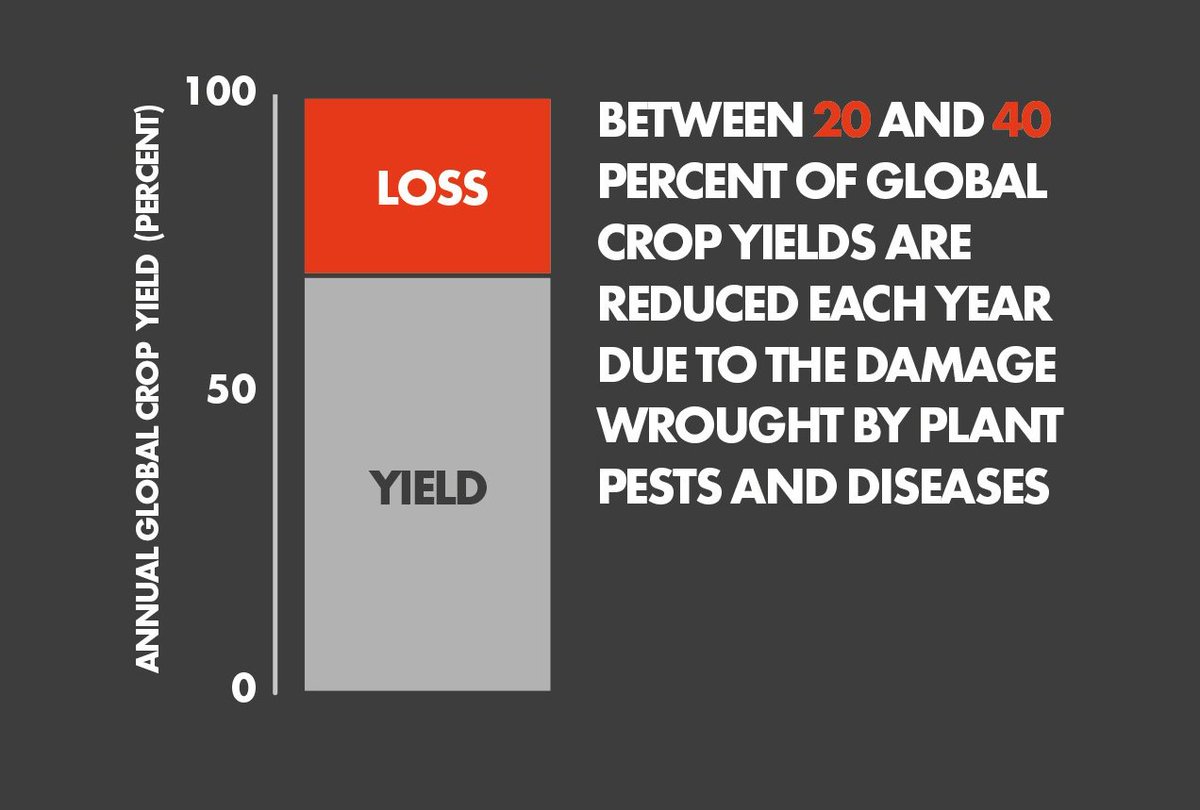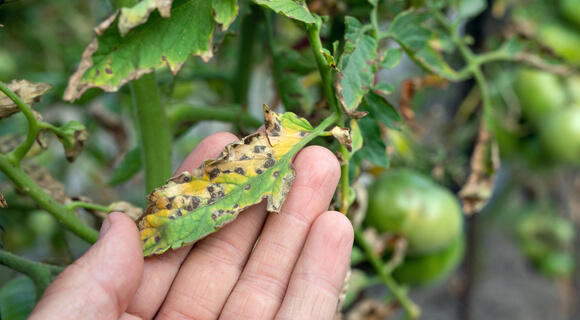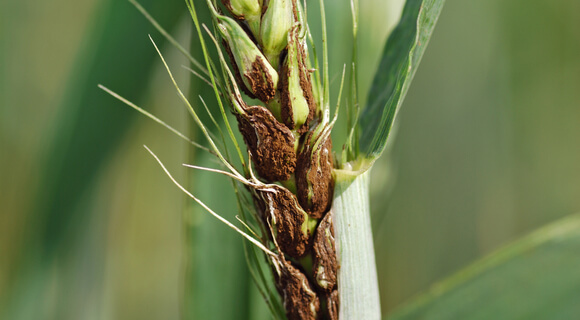Crop diseases are a major concern for farmers and agricultural economies worldwide. These diseases can significantly impact crop yields and quality, leading to economic losses and food insecurity. In this article, we will discuss the ten most important economic impacts of crop diseases.
1. Yield Reduction
Crop diseases can have a significant impact on crop yields, leading to reduced harvest and economic losses for farmers. This can occur in several ways:
- Direct Yield Loss: Some crop diseases can directly attack the reproductive structures of the plant, reducing the number of flowers, fruits, or seeds produced. For example, powdery mildew can infect the flowers and reduce their ability to produce seeds, leading to lower yields.
- Stunted Growth: Many crop diseases can cause stunted growth in plants, reducing the size of the plant and limiting its ability to produce a full yield. For example, Verticillium wilt can cause wilting and stunted growth in tomato plants, leading to lower yields.
- Reduced Photosynthesis: Some crop diseases can also impact the photosynthetic process, reducing the plant’s ability to produce food and grow. This can lead to reduced yields, as well as poor-quality crops that are more susceptible to secondary infections.
- Death of Plants: In severe cases, crop diseases can kill the plant, leading to complete crop loss. For example, late blight can cause the rapid death of potato and tomato plants, leading to total crop loss in affected fields.

2. Decreased Quality
Crop diseases can impact the quality of crops in several ways, leading to decreased market value and lower profits for farmers:
- Physical Damage: Some crop diseases can cause physical damage to the fruit or vegetable, making it unmarketable. For example, scabs on apples can cause rough, scabby lesions that reduce the fruit’s aesthetic appeal and make it unsuitable for sale.
- Reduced Nutritional Value: Some crop diseases can also reduce the nutritional value of the crop, making it less desirable to consumers. For example, mosaic viruses can cause yellowing and mottling in leaves, reducing the levels of essential nutrients like vitamin C in the affected crops.
- Discoloration: Crop diseases can cause discoloration in fruits and vegetables, making them unappealing to consumers. For example, black rot in cabbage can cause black, rotting spots on the head, reducing its value and making it unsuitable for sale.
-
Reduced Shelf Life: Diseases in crops can also reduce the shelf life of the crop, making it less appealing to consumers and limiting its marketability. For example, soft rot in potatoes can cause the tubers to rot quickly, reducing their shelf life and making them unsuitable for sale.

3. Increased Production Cost
Crop diseases can lead to increased production costs for farmers in several ways:
- Pesticides and Fungicides: To control the diseases, farmers may have to use pesticides and fungicides, which can be expensive. This can lead to increased production costs and lower profits for farmers.
- Labor Costs: Crop diseases can also require more labor to manage, as farmers may need to monitor their fields more closely, scout for disease symptoms, and apply treatments more frequently. This can result in increased labor costs, which can be significant for farmers.
- Equipment Costs: In some cases, farmers may need to purchase new equipment, such as sprayers, to effectively control crop diseases. This can result in increased capital costs, which can be difficult for farmers to bear.
-
Crop Losses: In severe cases, It can cause complete crop loss, which can result in significant economic losses for farmers. To prevent these losses, farmers may need to replant crops, which can result in additional production costs.
4. Loss of Export Markets
Crop diseases can also impact a country’s ability to export crops, leading to economic losses and decreased market opportunities for farmers. This can occur in several ways:
- Trade Restrictions: Some countries may impose trade restrictions on crops that are affected by certain diseases, in order to prevent the spread of the disease to their own crops. For example, some countries may ban the import of crops that are infected with a specific disease, such as foot-and-mouth disease in livestock.
- Decreased Quality: Crop diseases can also reduce the quality of the crop, making it less desirable to international buyers. For example, discoloration or physical damage caused by a disease can reduce the marketability of the crop and limit its export potential.
-
Reputation Damage: Crop diseases can also damage a country’s reputation as a supplier of high-quality crops, making it less attractive to international buyers. For example, if a country has a reputation for producing crops that are frequently affected by a specific disease, buyers may opt to purchase crops from other countries instead.
5. Food Insecurity
This can occur in several ways:
- Decreased Food Supply: Crop diseases can lead to decreased food production, which can result in food shortages and increased food prices. This can make it difficult for low-income families to access sufficient, nutritious food, leading to food insecurity.
- Reduced Income: Crop diseases can also reduce the income of farmers, making it more difficult for them to purchase food and meet their basic needs. This can result in increased poverty and food insecurity, particularly in rural areas where agriculture is the primary source of income.
- Displacement of Farmers: In severe cases, crop diseases can cause complete crop failure, forcing farmers to abandon their fields and seek alternative livelihoods. This can result in increased migration, reduced food security, and increased poverty in affected communities.
6. Labor Losses
Crop diseases can also result in significant labor losses, which can have significant economic impacts on farmers and communities. This can occur in several ways:
- Decreased Employment Opportunities: Crop diseases can result in decreased food production, which can reduce employment opportunities in the agriculture sector. This can result in unemployment and reduced income for farm workers, who may be forced to seek alternative livelihoods.
- Increased Labor Requirements: Crop diseases can also require more labor to manage, as farmers may need to monitor their fields more closely, scout for disease symptoms, and apply treatments more frequently. This can result in increased labor costs and reduced profits for farmers.
- Reduced Productivity: Some crop diseases can also reduce the productivity of farm workers, making it more difficult for them to complete their tasks in a timely manner. For example, workers who are suffering from symptoms of a crop-related illness may be less efficient, which can reduce overall productivity and increase labor costs.
- Displacement of Workers: In severe cases, crop diseases can cause complete crop failure, forcing farmers to abandon their fields and seek alternative livelihoods.
7. Reduced Investment
Crop diseases can also have a significant impact on investment, both in the agriculture sector and in related industries. This can occur in several ways:
- Reduced Investment in Agriculture: Crop diseases can reduce the profitability of farming, making it less attractive to investors. This can result in decreased investment in the agriculture sector, as investors may opt to put their money into other industries that are perceived as being more profitable or less risky.
- Decreased Investment in Research and Development: Crop diseases can also reduce the amount of funding available for research and development of new technologies, such as improved seed varieties or disease control methods. This can limit progress in the agriculture sector and reduce the long-term competitiveness of the industry.
- Reduced Investment in Infrastructure: Crop diseases can also reduce the amount of funding available for infrastructure development, such as irrigation systems or storage facilities, which are critical for the success of the agriculture sector. This can limit the growth and competitiveness of the industry, and reduce investment in related industries.
- Deterrent for New Farmers: Crop diseases can also discourage new farmers from entering the agriculture sector, as they may perceive it as being too risky or unprofitable. This can result in decreased investment in the agriculture sector, as fewer new farmers mean less capital available for expansion and development.
8. Limitations on Crop Diversity
- Monoculture: To reduce the risk of disease, many farmers may opt to grow only a single crop, rather than a diverse mix of crops. This can result in monoculture, which can limit the genetic diversity of crops and increase the vulnerability of the agriculture sector to diseases and other pests.
- Loss of Heirlooms and Traditional Varieties: Diseases in crops can result in the loss of heirlooms and traditional varieties of crops, which are important for cultural and genetic diversity. This can limit the ability of farmers to adapt to changing environmental conditions and reduce the resilience of the agriculture sector to diseases and other pests.
- Decreased Availability of Nutritious Crops: Crop diseases can reduce the availability of nutritious crops, such as leafy greens or root vegetables, which are important sources of vitamins and minerals for many communities. This can result in decreased dietary diversity and reduced nutrition, particularly in communities where these crops are staple food.
- Reduced Research and Development: Diseases in crops can reduce the amount of funding available for research and development of new crops, varieties, and breeding programs, which are critical for maintaining crop diversity and the long-term competitiveness of the agriculture sector.
9. Reduced Genetic Diversity
Genetic Uniformity: Crop diseases can also result in a reduction of genetic diversity by promoting the cultivation of only a few highly susceptible varieties, leading to genetic uniformity. This can make crops more susceptible to diseases and other pests, and increase the vulnerability of the agriculture sector to major disease outbreaks.
10. Environmental Impacts
Crop diseases can also have a significant impact on the environment, which can have far-reaching consequences for both the agriculture sector and the broader ecosystem. This can occur in several ways:
- Pesticide Use: To control crop diseases, farmers may use large quantities of pesticides, which can have negative impacts on the environment. Pesticides can contaminate soil, water, and air, and harm beneficial insects and other wildlife.
- Soil Degradation: It can also result in soil degradation, which can reduce the fertility of the soil and the productivity of the land. This can result in increased use of fertilizers, which can contribute to water pollution and other environmental impacts.
- Reduced Biodiversity: Crop diseases can result in a reduction of biodiversity, which can have negative impacts on the environment. The loss of diversity can reduce the resilience of ecosystems to environmental stressors, and can result in decreased ecosystem services, such as pollination and pest control.
- Increased Greenhouse Gas Emissions: It can contribute to increased greenhouse gas emissions, which are a major contributor to climate change. This can occur through the increased use of fossil fuels for transportation, the production of pesticides and fertilizers, and the loss of carbon storage in soils and vegetation.
 Plantlet The Blogging Platform of Department of Botany, University of Dhaka
Plantlet The Blogging Platform of Department of Botany, University of Dhaka






I love the answer
I do agree with all the ideas you have introduced on your post They are very convincing and will definitely work Still the posts are very short for newbies May just you please prolong them a little from subsequent time Thank you for the post
Just wish to say your article is as surprising The clearness in your post is just cool and i could assume youre an expert on this subject Fine with your permission allow me to grab your RSS feed to keep updated with forthcoming post Thanks a million and please keep up the enjoyable work
Fantastic read! I was especially impressed by the depth provided on the topic, offering a perspective I hadn’t considered. Your insight adds significant value to the conversation. For future articles, it would be fascinating to explore more to dive deeper into this subject. Could you also clarify more about the topic? It caught my interest, and I’d love to understand more about it. Keep up the excellent work!
Fantastic read! I was especially impressed by the depth provided on the topic, offering a perspective I hadn’t considered. Your insight adds significant value to the conversation. For future articles, it would be fascinating to explore more to dive deeper into this subject. Could you also clarify more about the topic? It caught my interest, and I’d love to understand more about it. Keep up the excellent work!
Your insights always leave me thinking.
Fantastic site Lots of helpful information here I am sending it to some friends ans additionally sharing in delicious And of course thanks for your effort